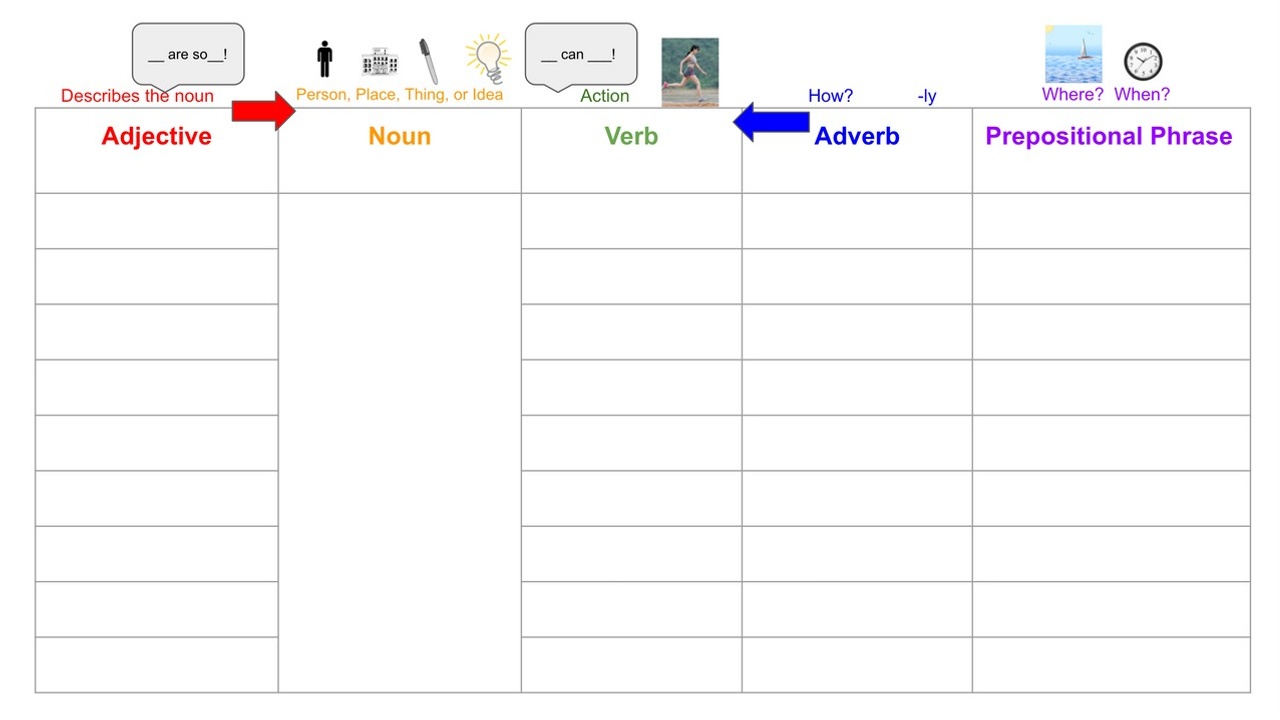Teaching Grammar through the SPC

What’s the first thing that comes to mind when you think of teaching grammar? Anticipation? Dread? Or just plain… b-o-r-i-n-g?
Understanding grammar is necessary for English learners and native speakers to understand, speak, read, and write the English language properly. But it doesn’t have to be complicated, dull or scary!
Simply put, grammar is the study of sentence structure.
All you really need are a few basic guidelines and the Project GLAD® strategy called the Sentence Patterning Chart, or SPC.
Tips for teaching grammar
- Teach the basics
Beginning language learners need to know 3 basic grammar rules:
- Parts of speech
- Subject-Verb agreement (Who’s doing the action?)
- Verb Tense (When is the action happening?)
- Teach what students need
Once your students have the basics, all the other grammar points and skills can be taught in any order. Yep, you heard me right. In any order.
Linguist, Stephen Krashen, developed 5 hypotheses for language acquisition, one of which was the natural order hypothesis. The natural order hypothesis stated there is a natural and predictable order in which students acquire grammatical structures. This hypothesis was developed from research findings from the 1970’s and 80’s.
However, in the subsequent 25 years Krashen has revised this hypothesis through his own further research and observations. He now rejects the notion that teaching grammar should follow a predictable pattern.
His observations indicate when students are ready for a certain grammatical pattern, they will retain it. The tricks are to assess their prior knowledge so the teacher understands what skills they have already acquired, and then teach new skills through rich comprehensible input.
If your students will need to know past tense verbs to comprehend a history text, then teach past tense verbs. If they will need to know pronouns, transitions, or how to order adjectives to write an essay, then teach those skills. This brings us to our last tip.
- Teach in context.
Teachers sometimes rely on worksheets because they don’t know what else to do and that’s what their curriculum offers.
But let’s face it, worksheets are passe and rarely effective.
Worksheets don’t provide valid information about whether or not the student can effectively use the structure or form in oral or written discourse.
The most effective way for students to learn and retain language structures and forms is by teaching them in many contexts throughout the day, and in all subject areas.
Use a spiral method in your planning so you circle back to those skills again and again.
When their brains are ready to make the connections, they will retain those skills.
The Sentence Patterning Chart, a powerful teaching strategy

The Project GLAD® instructional model offers a practical and flexible strategy for teaching grammar basics in context. It is our ‘Best in Show’ strategy, the Sentence Patterning Chart. The SPC is applicable for students at any grade level and can be used in any subject area.
The teacher starts with a plural noun, thematically linked to one of their current units of study (clouds, reptiles, rocks, expressions, explorers). The noun is the anchor for this chart.
The teacher then guides the students how to brainstorm adjectives, verbs, adverbs (for 2nd and above), and prepositional phrases aligned to that noun. The brainstormed parts of speech are added to the chart using a color coding of the teacher’s choice. The words are put together and the resulting sentences chanted using the tune The Farmer in the Dell.
This routine teaches grammar and academic vocabulary in context because students are using the words learned in their subject area studies. Chanting the sentences imprints the parts of speech and sentence structure.
And of course, it wouldn’t be a GLAD chart without color coding! Color-coding the parts of speech is a scaffold for putting the parts of speech in the right order when students apply their skills by chanting and writing their own sentences.
From this basic chart additional grammar lessons can be added, either by adding columns, changing the order of the columns, or playing extension games (The Reading Game and Trading Game).
Thanks for reading!
Jody and Sara


